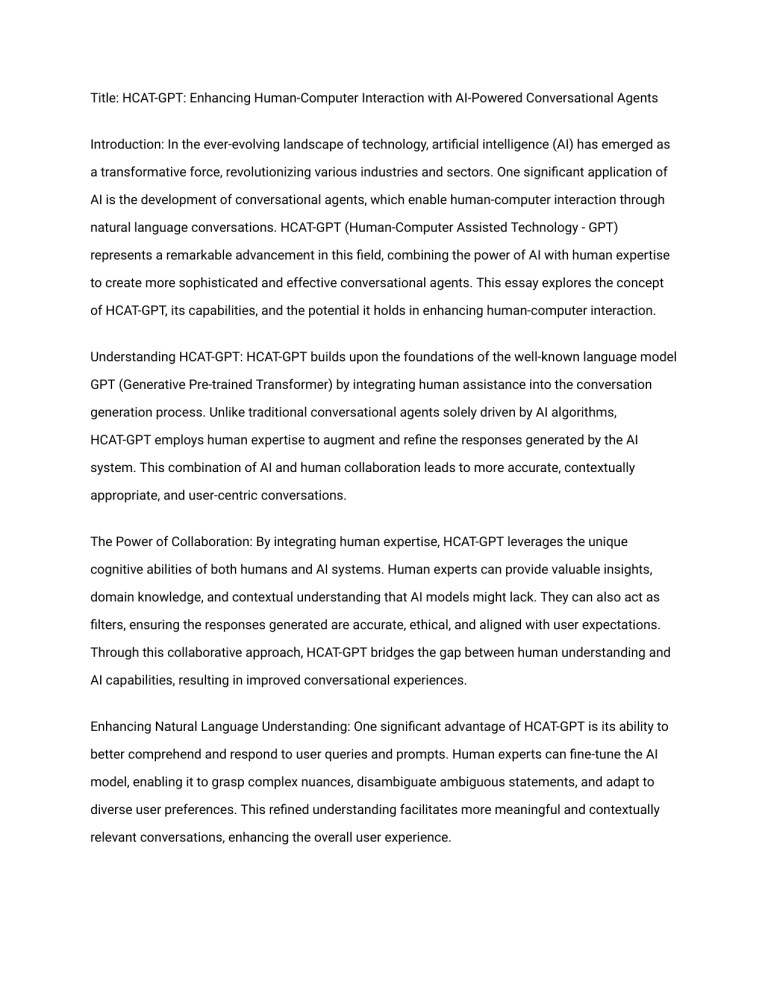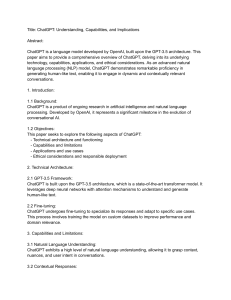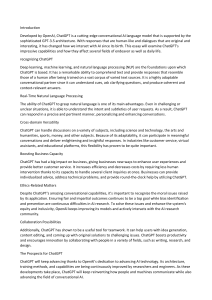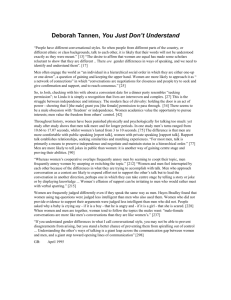
Title: HCAT-GPT: Enhancing Human-Computer Interaction with AI-Powered Conversational Agents Introduction: In the ever-evolving landscape of technology, artificial intelligence (AI) has emerged as a transformative force, revolutionizing various industries and sectors. One significant application of AI is the development of conversational agents, which enable human-computer interaction through natural language conversations. HCAT-GPT (Human-Computer Assisted Technology - GPT) represents a remarkable advancement in this field, combining the power of AI with human expertise to create more sophisticated and effective conversational agents. This essay explores the concept of HCAT-GPT, its capabilities, and the potential it holds in enhancing human-computer interaction. Understanding HCAT-GPT: HCAT-GPT builds upon the foundations of the well-known language model GPT (Generative Pre-trained Transformer) by integrating human assistance into the conversation generation process. Unlike traditional conversational agents solely driven by AI algorithms, HCAT-GPT employs human expertise to augment and refine the responses generated by the AI system. This combination of AI and human collaboration leads to more accurate, contextually appropriate, and user-centric conversations. The Power of Collaboration: By integrating human expertise, HCAT-GPT leverages the unique cognitive abilities of both humans and AI systems. Human experts can provide valuable insights, domain knowledge, and contextual understanding that AI models might lack. They can also act as filters, ensuring the responses generated are accurate, ethical, and aligned with user expectations. Through this collaborative approach, HCAT-GPT bridges the gap between human understanding and AI capabilities, resulting in improved conversational experiences. Enhancing Natural Language Understanding: One significant advantage of HCAT-GPT is its ability to better comprehend and respond to user queries and prompts. Human experts can fine-tune the AI model, enabling it to grasp complex nuances, disambiguate ambiguous statements, and adapt to diverse user preferences. This refined understanding facilitates more meaningful and contextually relevant conversations, enhancing the overall user experience. Adapting to User Feedback and Evolution: The integration of human expertise in HCAT-GPT not only enhances its initial performance but also enables continuous improvement and adaptation. User feedback and evaluations can be incorporated into the system, allowing it to learn from real-world interactions and refine its responses over time. As a result, HCAT-GPT can evolve to meet user needs, address specific domain requirements, and stay up-to-date with the evolving nature of language and conversation. Applications and Implications: The applications of HCAT-GPT span various domains, including customer service, virtual assistants, healthcare, education, and more. It can provide personalized and empathetic support to users, simulate human-like conversations, and assist in information retrieval or decision-making processes. Additionally, the ethical implications of HCAT-GPT must be considered, such as ensuring transparency, fairness, and accountability in the system's responses. Conclusion: HCAT-GPT represents a significant advancement in the field of conversational agents, harnessing the power of AI and human expertise to enhance human-computer interaction. By combining the strengths of both, HCAT-GPT enables more accurate, contextually appropriate, and user-centric conversations. The collaboration between humans and AI systems has the potential to revolutionize various industries, improving customer experiences, supporting decision-making processes, and expanding the boundaries of AI capabilities. As HCAT-GPT continues to evolve, it is crucial to foster ethical considerations, transparency, and responsible implementation to ensure its benefits are harnessed for the betterment of society.




